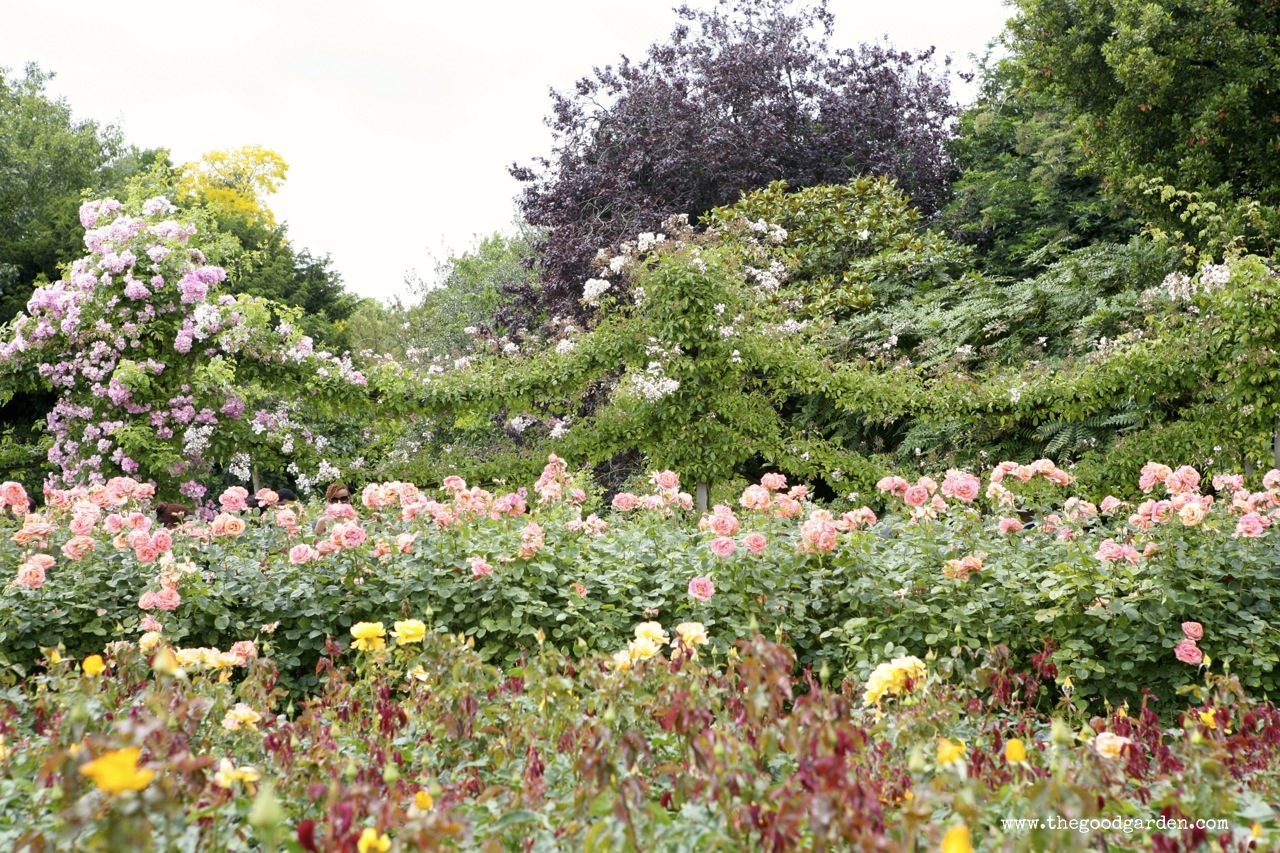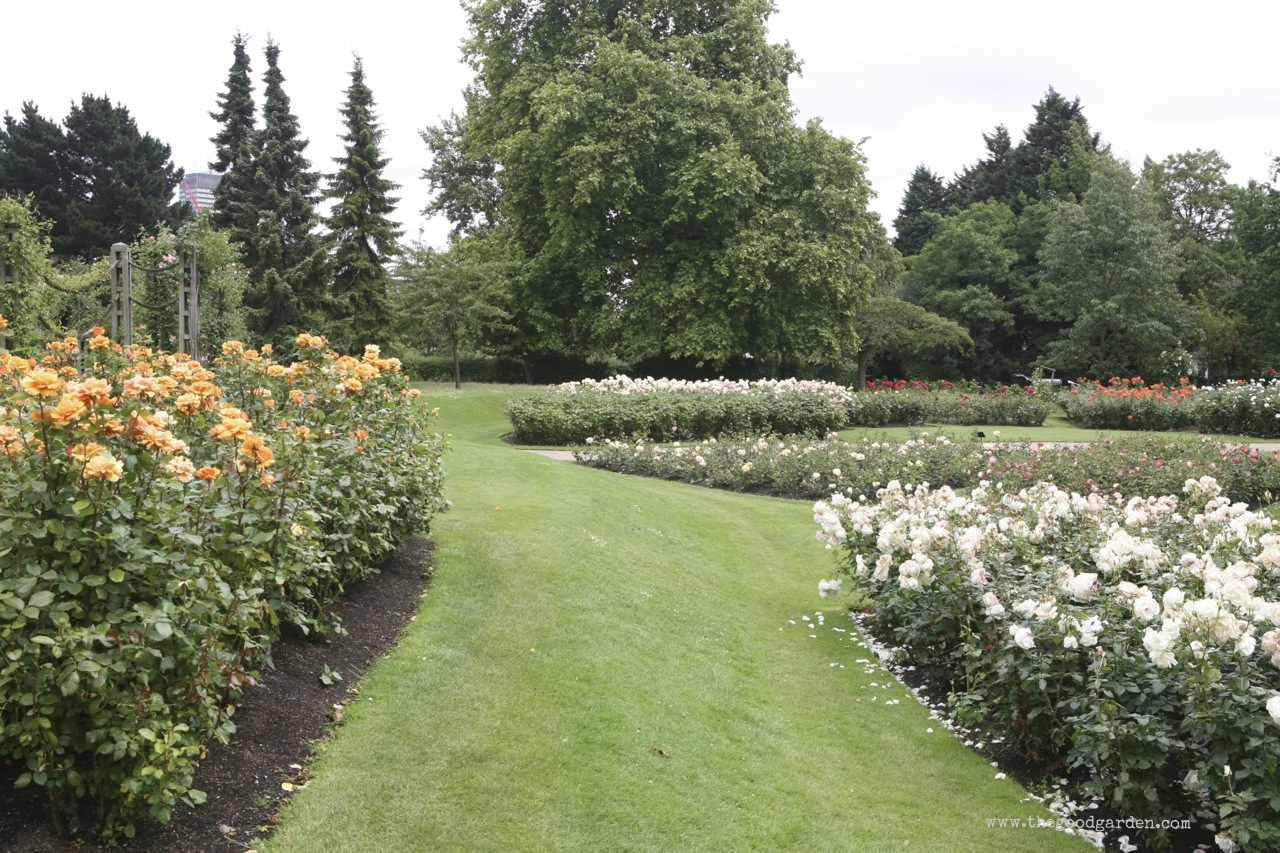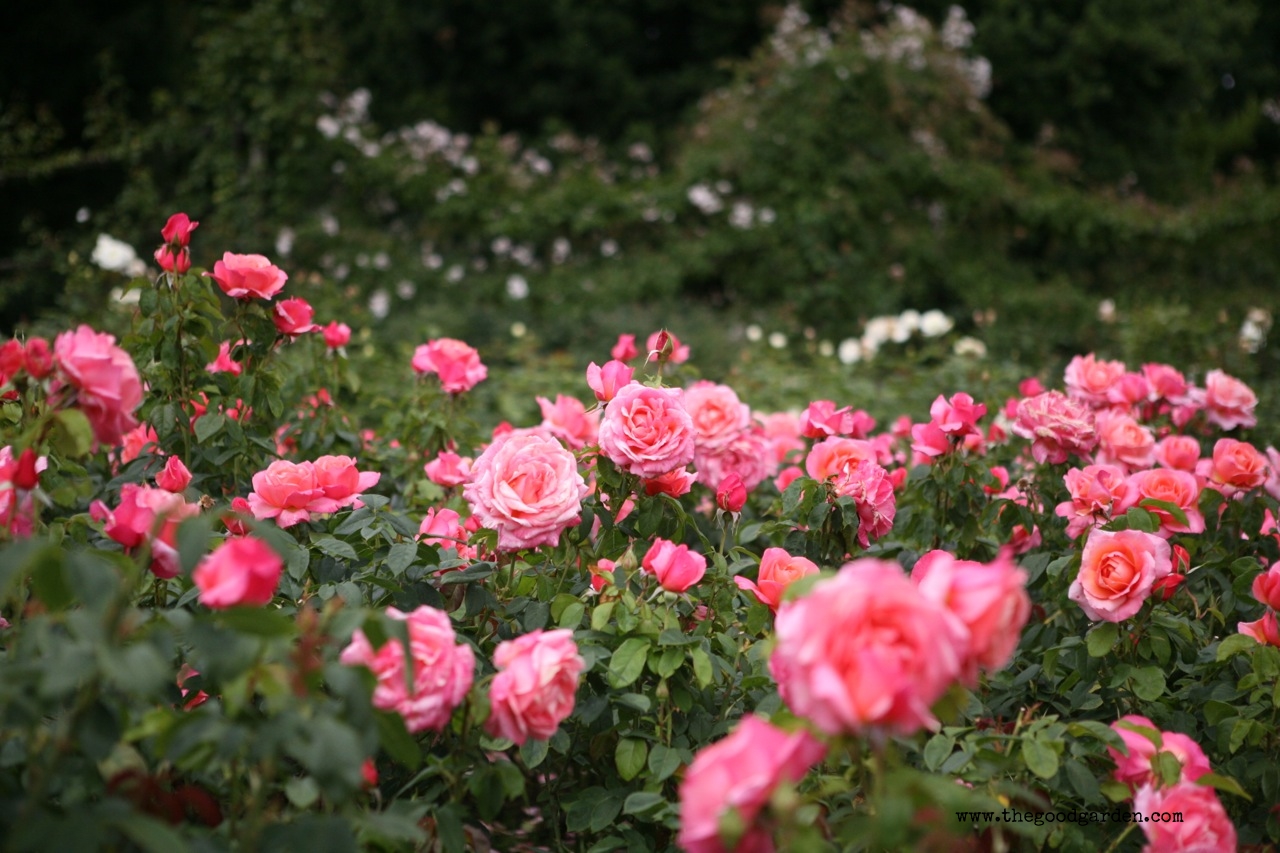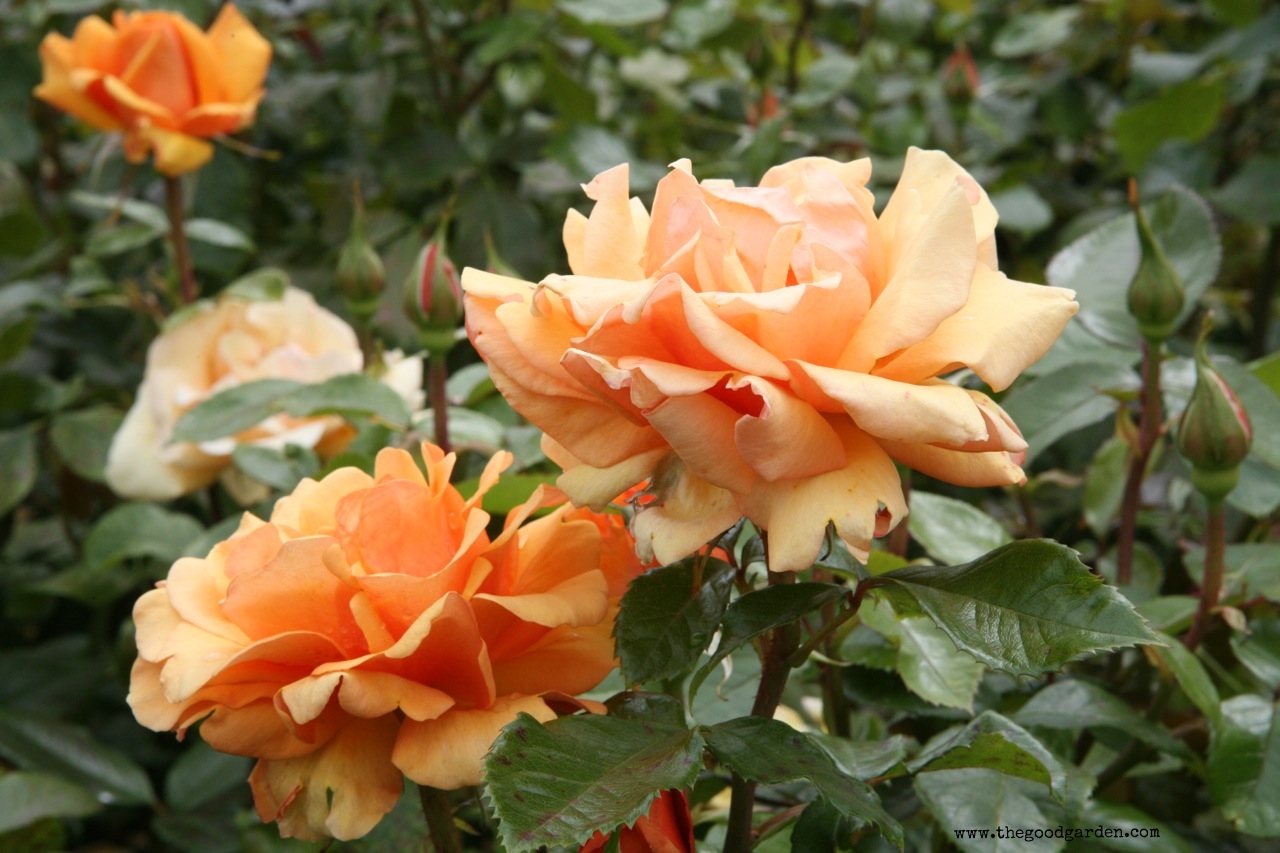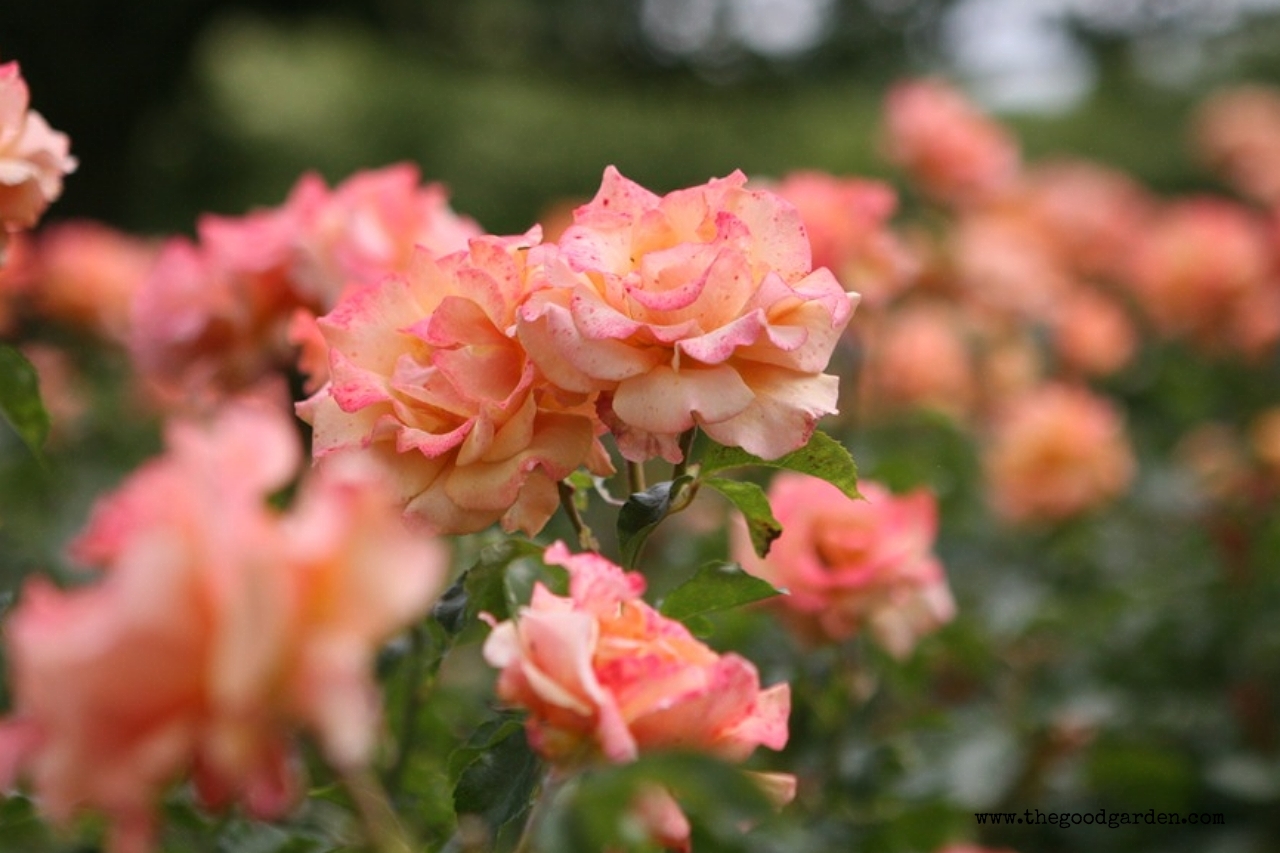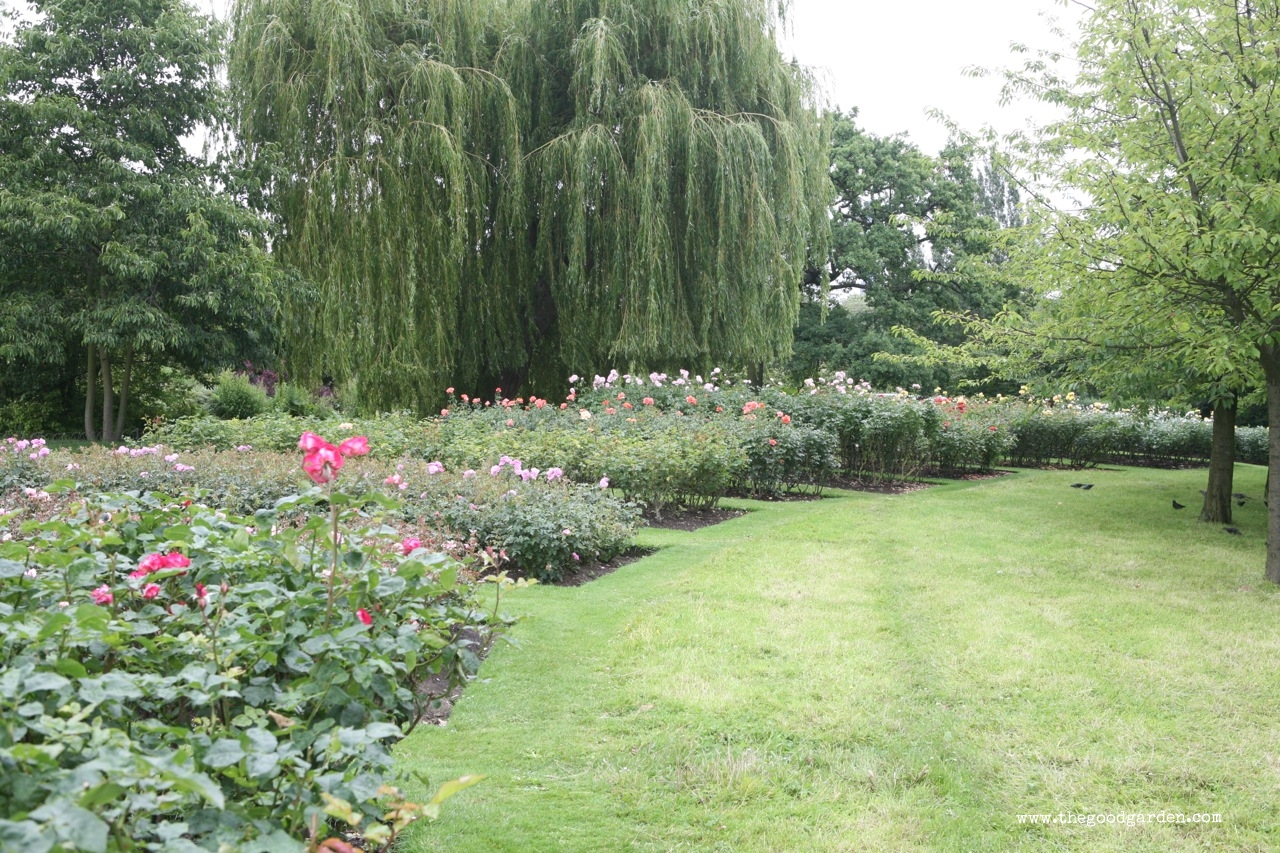I couldn't let February go without a final salute to the rose since few plants hold our imagination in the same way. The rose has served as a symbol of love, beauty, war, and death; its uses span from celebrations to medicine. The power of the rose can be seen in the popularity of the rose garden – a garden dedicated to this one plant.
I must confess that I don’t grow roses. I don’t like to garden with thorny plants. And I am turned off by the prospect of having to battle diseases with terrible names like black spot, rust, and rose canker, to name a few. This doesn’t mean that I don’t appreciate the rose. The fact that I don't have roses in my own garden makes them that much more precious with I see them in others. The colors, patterns, and fragrance can't be beat. I tip my hat to gardeners braver than me, who succeed with this plant that sits at the top of the food chain.
A tapestry called Courtiers in a Rose Garden. 1440-50, South Netherlands. Source: The Metropolitan Museum of Art.
According to the University of Illinois Extension, "The rose is ... 35 million years old. In nature, the genus Rosa has some 150 species spread throughout the Northern Hemisphere... Garden cultivation of roses began some 5,000 years ago, probably in China. During the Roman period, roses were grown extensively in the Middle East. They were used as confetti at celebrations, for medicinal purposes, and as a source of perfume." Cultivated roses which had many more petals than wild roses came to Europe in the 1700’s.
One rose garden that blew me away was Queen Mary’s Rose Garden in Regent’s Park. It is the largest rose garden in London with 12,000 roses across 400 varieties. Planted in the 1930's in blocks, I have never seen so many roses in one place. The color and fragrance will knock you out.
Next time you are in London, this is a great spot to visit.
See more examples of gardenesque gardens here.

